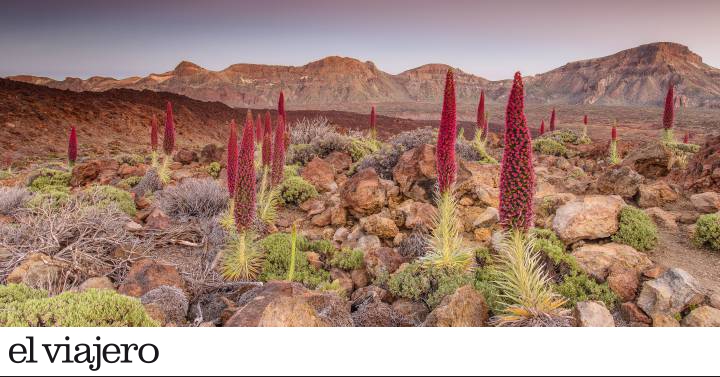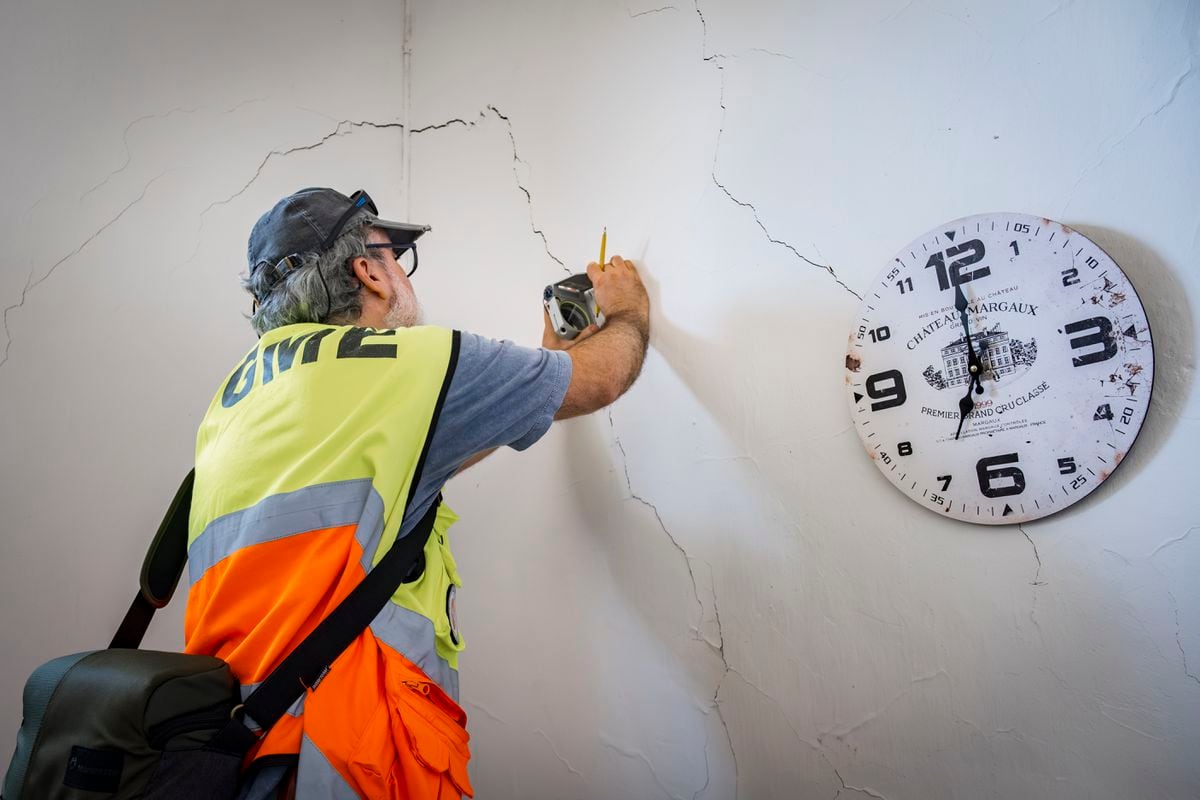Varied landscapes, diverse microclimates, short distances;
beaches, mountains, volcanoes.
Add to a powerful natural wealth gastronomic products of the land and a leisurely pace that invites you to explore everything calmly, enjoying every moment as if it were a precious gift, and the result is the getaway that we are all looking for, especially in these times that they run.
This is Tenerife.
On this island of little more than 2,000 square kilometers, each stride leads to surprising natural treasures and more than one thousand-year-old jewel.
A place whose charms do not leave anyone indifferent.
Even if it is only because of the Teide and its imposing 3,718 meters high, one is already attracted to this island.
But Tenerife is much more than the site of the highest peak in Spain.
A territory full of unusual nooks and crannies where volcanic landscapes engender black sand beaches that share the bill with others with golden complexions;
where the desert landscapes are interspersed with vertiginous cliffs, subtropical jungles and laurel forests, an endemic wonder that some archipelagos of Macaronesia (Azores, Madeira and the Canary Islands) still treasure.
Also known as Monteverde, they are the remains of a Tertiary forest with more than 20 million years, so unique that it has been declared a biosphere reserve.
This unique ecosystem is located in the rural park of Anaga, in the north of the island, where the abundant humidity throughout the year means that it can still exist.
Going into these forests allows you to see ancient trees up to 40 meters high, where the viñátigos (of the
Lauraceae
family
)
are the most characteristic.
Along with them, pines, eucalyptus, laurels, wild orange trees, linden trees, ferns appear at every step: a blanket of flora of incalculable biological value.
Losing yourself in its thicket, bathed in the sunlight that filters through its tall forest canopy, encourages us to forget everything, to pay maximum attention to the environment and sharpen our perceptions almost in an animal way.
The park is home to the so-called Sendero de los Sentidos, a route that offers different experiences through touch, hearing and even smell.
Along this old royal road, which once connected the rural area of Anaga with the city of San Cristóbal de La Laguna, we find signs with a hand, an ear or an eye that invite you to touch that tree and feel its texture, to listen to the song of that bird, to discover the aromas of a living environment.
Pure magic.
Another mass of laurel forest runs along the Sendero de los Guardianes Centenarios.
It is located very close to the Anaga rural park, but already within the Agua García forest.
A fascinating and mysterious route where peace and tranquility are such that the enveloping melody of silence can be appreciated, interrupted only by the wind shaking the treetops, the flapping of a bird among the branches, the own footsteps on the soft creaking of the road leaves.
A path that during the 15th century was one of the most important aquifers in the municipality of Tacoronte and which is also guarded by ancient vineyards.
Like the long-lived specimen of the Cuna, which during its more than 800 years has developed such thick and tall roots, today covered with thick moss, that they have created a kind of cave at its base.
A few steps away is the short wooden bridge of Toledo, which leads to the caves of the same name: a set of underground caves also known as the Glass Caves, because trachyte was extracted from them in the 16th century. , a necessary material for its manufacture.
enlarge photo Benijo beach, on the northeast coast of the island of Tenerife.
Sergii Kumer Alamy
But the Anaga rural park is not only made up of magical and ancient groves.
Benijo beach and Punta del Hidalgo are two places that are worth including in the road book.
Benijo is a good example of the volcanic origin of the island and an enclave away from mass tourism, ideal for more intrepid travelers.
It is not a sandy area in the classic fashion, where you arrive with your towel and your umbrella ready to spend hours enjoying the sun, the fine golden sand and the gentle waves.
Getting here involves driving along a winding road and, already on foot, descending a steep wooden staircase to step on a black sand beach, flanked by an immense mountain, from which you can see the Roques de Benijo (on the left) and from La Rapadura (on the right).
Tenerife in general and Anaga in particular are riddled with these rocks: tall volcanic domes that rise imposingly from prominent locations inland or off the coast, emerging from the very waters of the ocean.
To the west, Punta del Hidalgo is known, in addition to its good waves for surfing, for a peculiar and brilliant architectural landmark: its lighthouse.
And it is that this futuristic 50-meter-high construction is more reminiscent of the skyscrapers of cities such as Chicago or Dubai than of a watchtower that illuminates the navigators, which does not detract an iota of appeal from its spiky structure of immaculate whiteness.
And adjoining, again to the west, is Bajamar, which in addition to housing the church of San Juan Bautista, from 1628, is an ideal place to start one of the innumerable routes through the Anaga massif.
Volcanic architecture
Along with the rocks, the volcanic tubes are another of the geological peculiarities of Tenerife.
It is a kind of tunnels or cavities that are formed within the incandescent layers of lava that flow after the eruption of a volcano and when its outermost layer quickly solidifies when it comes into contact with air.
enlarge photo Typical architecture of Tenerife in Icod de los Vinos.
Marlene Vicente GETTY images
The Cave of the Wind is the largest volcanic tube in Europe and the fifth in the world - the other four are in Hawaii.
Formed about 27,000 years ago, it is made up of almost 18 kilometers of galleries at different levels that give way to impressive lava stalactites and solidified waterfalls.
This underground labyrinth is in Icod de los Vinos, a small town to the northeast of the island, ideal for tasting the typical Tenerife wines — accompanied, if possible, with native goat and sheep cheeses and honey from Teide — and gazing at its famous ancient dragon tree.
Located in the middle of a botanical garden that brings together a great variety of indigenous and endemic plant species from the Canaries, this tree from the
Dracaena draco family
is one of the oldest specimens on the planet.
Legend has it that the dragons of the past turned into trees when they died and that is why, when their bark is cut, a red resin sprouts: the so-called dragon's blood.
It is also said that this particular dragon tree is more than 1,000 years old, but since despite its almost 20 meters high and 10 meters in perimeter it is not technically a tree, but rather an arboreal plant, its age cannot be ascertained by observing the rings. of its trunk, but through the estimated number of branches.
Thus, myths and legends aside, it is estimated that the ancient dragon tree of Icod is no more than 800 years old (which is not a few).
In any case, this wonder that stands as one of the emblems of the island was declared a national monument in 1917.
enlarge photo The church of Santa Ana, in Garachico.
Alamy
Continuing west, about 10 kilometers away, Garachico awaits, which was once the main commercial port of Tenerife.
The commercial exchange was monopolized by sugar imports and wine exports between Europe and America, until in 1706 the eruption of the Trevejo volcano destroyed the town and buried it under lava.
It resurfaced with force from the ashes until it became the town that we contemplate today, with narrow and cobbled streets, full of vestiges of the 16th and 17th centuries.
The convent of San Francisco, the hermitage of San Roque and the churches of Nuestra Señora de los Ángeles or Santa Ana are some of the examples of its remarkable historical and cultural heritage.
Not forgetting the castle of San Miguel, a small stone fortification on the edge of the Atlantic that exemplifies the defensive constructions that were raised to protect themselves from pirate incursions.
Like that of the English corsair Francis Drake, who, according to oral tradition, attacked the island entering through this point to steal his wine before heading to the Strait of Magellan and the coasts of Peru.
Be that as it may, just behind this defensive tower we find the natural pool of El Caletón and opposite, rising above the sea, the Roque de Garachico.
Natural pools like this one, which fill with water when the tide rises and are usually flanked by arms of volcanic rock, can be found in other parts of the island, such as in the Santa Lucía neighborhood, on the coast of Güímar, or the puddles of La Laja and del Viento.
enlarge photo A hiker on the Los Gigantes cliffs.
Antoine Bielmann GETTY images
The journey continues to the Los Gigantes cliffs, one of the most breathtaking places in Tenerife.
Located on the west coast, within the Teno Rural Park, this set of natural volcanic walls and solidified lava columns form a solemn structure more than 600 meters high, which extends another 30 meters below the sea.
Many of them are impregnable, and perhaps because of that, and because it was thought that the world ended here, the first Guanches of the island baptized them with the name of Devil's Walls and Hell's Walls.
For lovers of the sea and diving, it is an idyllic place: the best island enclave for whale watching and, in addition, its seabed houses a great natural wealth, scattered among the caves and nooks that the cliffs form underwater.
enlarge photo The old lighthouse at Punta de Teno.
Getty Images
A little further north, Punta de Teno is an arm of land that juts out into the sea and invites you to stay until the end of the day and enjoy the sunset at the westernmost point of Tenerife.
In addition, turning around and seeing the cliffs from this perspective makes one understand why the Guanches gave it that name.
Also within the rural park of Teno is the Monte del Agua, a small sample of laurel forest that unfolds between ravines and royal roads.
A good hiking route of about 12 kilometers runs through here, which starts in the small town of Los Silos and passes through Las Moradas - whose name is due to the ancient and humble dwellings of the shepherds and farmers - and Cuevas Negras, part of an ancient Camino Real where locals who were dedicated to agriculture and livestock lived.
The roof of Spain
Impossible not to visit Mount Teide.
The typical cliché?
Nothing is further from reality.
This summit, which reaches an altitude of 4,000 meters and marks the highest point in Spain, is, above all, a natural wonder that was declared a world heritage site by UNESCO in 2007. Climbing up to the very summit —requires a prior permit (national parks reserves. es) - is a great experience for anyone.
Especially if you walk all the way through its volcanic sand trails, discovering unique flora species such as the red tajinaste - also called Teide blood, it is an endemic plant shaped like a dark red spear - and the Teide violet. , and detecting its characteristic sulfur odor.
Because this pyramidal peak is a volcano that still registers seismic activity and is currently in a period of rest, according to volcanologists.
enlarge photo Sunrise from the top of Teide.
Helen Ross GETTY images
The best way to appreciate it in all its splendor is to take a couple of days to get to the top, spending a night in the Altavista refuge (3,260 meters; volcanoteide.com).
In addition to making the climb more bearable, at nightfall the sky appears as in few corners of the world.
The low light pollution and the excellent atmospheric quality, added to the altitude, allow us to contemplate a blanket full of stars, stars and normally invisible constellations.
During the day it is also possible to observe these celestial wonders in detail from the Astronomical Observatory, at 2,390 meters.
A recommendation?
Feel free to get up early to reach the top at sunrise.
You may get an idea of how the ancient Olympian gods felt.
Speaking of gods, a good number of scenes from the modern version of
Clash of the Titans
(2010)
were shot in Los Roques de García
, such as the one in which Perseus faces giant scorpions.
At the foot of Teide, in the Ucanca valley, the eruption of a volcano some 200,000 years ago separated the caldera from Las Cañadas, giving rise to these rock formations that comprise a circular route of less than four kilometers.
The Waterfall, the Cathedral or the Roque Blanco are some of the immense stone structures that make up this complex, of which probably the best known is the Roque Cinchado or Dedo de Dios: 27 meters high of a kind of reddish chimney that appeared in the old 1,000 pesetas banknotes.
This area of the Teide National Park is the best on the island to admire lunar landscapes.
Right at the foot of the mountain is the highest town in Spain, Vilaflor (1,450 meters).
A landscape of craters, volcanic chimneys and other rock formations where the protagonist is the pumice or pumice stone, that white rock of such low density that floats in the water and is indicative of violent volcanic eruptions, such as the one that Pompeii buried under Vesuvius.
Walking around here might be the closest thing to stepping on the Moon, if it weren't for the patches of Canary Island pine that dot the scene.
The Arco de Tajao is another remarkable lunar landscape.
Located in the south of Tenerife, it is located in the Bijagua ravine.
This kind of rock bridge arose about 270,000 years ago, like so many other things on this island, by the eruption of a volcano.
With the passage of time, the erosion of the water and the wind was giving shape to it until it became the structure of almost 30 meters long and 10 high that we see today.
Tempting as it is, don't walk on the surface.
This impulse that so many visitors cannot suppress is endangering its conservation due to the risk of collapse.
Millennial landscapes and settings like this and many others in Tenerife, of incalculable cultural and environmental value, deserve to be discovered and enjoyed, but also preserved in order to continue enjoying their presence for thousands of years more.
Gastronomic tracks
“To be a
guachinche
you must grow and make your wine, a local wine we call the
chulo de Tenerife
”, explains Aída Martín, owner of the Guachinche Los Gómez (629 62 05 89), near La Orotava.
The
guachinches
are rustic dining rooms mounted in the back of some houses in the mountains of Tenerife, most of them located on the green slopes of the north.
"They are not found in any other part of the Canary Islands", explains Martín.
They arose many years ago, as something illegal, when the vine growers who grew that
pimp from Tenerife
needed to sell the surplus.
Then they decided to accompany it with dishes of the local gastronomy (old clothes, grilled cutlet, chips, melted pecorino cheese) and today they stand as one of the most prominent signs of cultural identity on the island.
Other
guachinches
to consider: La Paca, Casa Carlos y Suso, near the Sendero de los Guardianes Centenarios, and Bibi and Mana, in Taganana.
If you want to discover the authentic Tenerife cuisine and have a good taste in your mouth, they are a must.
Find inspiration for your next trips on our Facebook and Twitter and Instragram or subscribe here to the El Viajero Newsletter.






